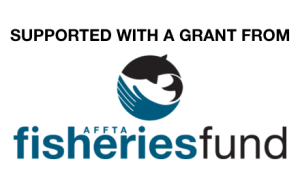ASMFC Public Hearings on Striped Bass Draft Addendum IV
Atlantic Coastal States Schedule Public Hearings on Striped Bass Draft Addendum IV
Arlington, VA – The Atlantic coastal states and jurisdictions have scheduled their hearings to gather public comment on Draft Addendum IV to Amendment 6 to the Interstate Fishery Management Plan for Atlantic Striped Bass. The dates, times, and locations of the scheduled hearings follow.
Maine Department of Marine Resources
September 4, 2014; 6-9 PM
Orion Performing Arts Center
MSAD#75, Mt. Ararat Middle School
66 Republic Avenue
Topsham, Maine
Contact: Terry Stockwellat 207.624.6553
New Hampshire Fish and Game
August 27, 2014; 7 PM
Urban Forestry Center
45 Elwyn Road
Portsmouth, New Hampshire
Contact: Doug Groutat 603.868.1095
Massachusetts Division of Marine Fisheries
September 2, 2014; 10 AM
Nantucket Community Room
4 Fairgrounds Road
Nantucket, Massachusetts
Contact: Jared Silvaat 617.626.1534
September 2, 2014; 6 PM
Massachusetts Maritime Academy
Admiral’s Hall, 101 Academy Drive
Buzzards Bay, Massachusetts
Contact: Jared Silvaat 617.626.1534
* MA DMF will also be seeking public comment on Spiny Dogfish Draft Addendum V at this hearing
September 3, 2014; 6 PM
MA DMF Annisquam River Station
30 Emerson Avenue
Gloucester, Massachusetts
Contact: Jared Silvaat 617.626.1534
* MA DMF will also be seeking public comment on Spiny Dogfish Draft Addendum V at this hearing
September 4, 2014; 6 PM
Viking Club
410 Quincy Avenue (Route 53)
Braintree, Massachusetts
Contact: Jared Silvaat 617.626.1534
Rhode Island Division of Fish & Wildlife
September 17, 2014 at 6 PM
University of Rhode Island, Corless Auditorium
South Ferry Road
Narragansett, Rhode Island
Contact: Nicole Lengyel at 401.423.1940
Connecticut Department of Energy and Environmental Protection
August 26, 2014; 7 PM
Marine Headquarters, Boating Education Center
333 Ferry Road
Old Lyme Connecticut
Contact David Simpson at 860.434.6043
New York State Department of Environmental Conservation
September 16, 2014; 7 PM
Stony Brook University Wang Center, Room 201
Stony Brook, New York
Contact: Carol Hoffman at 631.444.0476
Click here for google map to Wang Center
September 23, 2014; 7 PM
NYSDEC Region 3 Office
21 South Putt Corners Road
New Paltz, New York
Contact: Kathy Hattala at 845.256.3071
New Jersey Division of Fish and Wildlife
September 4, 2014; 7-9 PM
Galloway Twp. Branch of the Atlantic Co. Library
306 East Jimmie Leeds Road
Galloway, New Jersey
Contact: Russ Allen at 609.748.2020
* Will immediately follow the NJ Marine Fisheries Council meeting
September 15, 2014; 7-9 PM
Toms River Town Hall
L. M. Hirshblond Room
33 Washington Street
Toms River, New Jersey
Contact: Russ Allen at 609.748.2020
September 9, 2014; 7-9 PM
Ridgefield Park Elks Lodge #1506
Corner of Spruce Avenue and Cedar Street
Ridgefield Park, New Jersey
Contact: Russ Allen at 609.748.2020
Pennsylvania Fish & Boat Commission
September 17, 2014 at 6:00 pm
Silver Lake Nature Center (http://www.silverlakenaturecenter.org/)
1306 Bath Road
Bristol, Pennsylvania
Contact: Eric Levis at 717.705.7806
Delaware Department of Natural Resources and Environmental Control
September 11, 2014; 6 – 8 PM
DNREC Auditorium
89 Kings Highway
Dover, Delaware
Contact: John Clark at 302.739.9914
Maryland Department of Natural Resources, Fisheries Service
September 25, 2014; 6-9 PM
Cadby Theater, Kent Humanities Building
Chesapeake College
1000 College Circle
Wye Mills, Maryland
Contact: Michael Luisi at 410.260.8341
Virginia Marine Resources Commission
September 22, 2014 at 6 PM
Virginia Marine Resources Commission
2600 Washington Avenue, 4th Floor
Newport News, Virginia
Contact: Rob O’Reilly at 757.247.2248
Potomac River Fisheries Commission
September 23, 2014; 6 PM
222 Taylor Street
Colonial Beach, Virginia
Contact: Martin Gary at 804.224-7148
North Carolina Division of Marine Fisheries
September 29, 2014; 6 PM
Dare County Government Complex
954 Marshall C. Collins Drive
Manteo North Carolina
Contact: Michelle Duval at 252.808.8011
The Draft Addendum proposes new fishing mortality (F) reference points, as recommended by the 2013 benchmark stock assessment, and associated management measures to reduce F to a level at or below the proposed target within one or three years. It responds to results of the 2013 Atlantic striped bass benchmark assessment indicating F in 2012 was above the proposed F target, and female spawning stock biomass (SSB) has been steadily declining below the target since 2006. This means even though the stock is not overfished and overfishing is not occurring, SSB is approaching its overfished threshold and stock projections show SSB will likely fall below the threshold in the coming years. In addition, a similar decline has been observed in total harvest. In response to these factors, the Draft Addendum proposes management options to reduce fishing mortality to the target level.
The Draft Addendum includes a suite of management options to reduce recreational and commercial harvest along the coast and in the Chesapeake Bay under three reduction timeframes. The timeframes include (1) reducing F to its target in one year with a 25% reduction in 2013 harvest in 2015 (2) reducing F to its target within three years with a 17% reduction in 2013 harvest in 2015, and (3) reducing F to its target within three years with a 7% sequential reduction in harvest for three consecutive years starting in 2015. Specific options to be considered include bag, size, slot and trophy size limits for the recreational fishery and quota reductions for the commercial fishery.
Given the Albemarle Sound/Roanoke River (A/R) stock of striped bass contributes minimally to the coastwide complex when compared to the Chesapeake Bay, Delaware, and Hudson stocks, Draft Addendum IV proposes it be managed by the State of North Carolina using stock-specific biological reference points. These stock-specific reference points, which have been approved by the Board, would result in a separate quota that is set to maintain F for the A/R stock at its target level. The Board tasked the Technical Committee with the continued development of Chesapeake Bay-specific reference points for future use.
The Draft Addendum is available at http://www.asmfc.org/files/PublicInput/StripedBassDraftAddendumIV_PublicComment.pdf and can also be found on the Commission website (www.asmfc.org) under Public Input. Fishermen and other interested groups are encouraged to provide input on the Draft Addendum either by attending state public hearings or providing written comment. Public comment will be accepted until 5:00 PM (EST) on September 30, 2014 and should be forwarded to Mike Waine, Fishery Management Plan Coordinator, 1050 N. Highland St, Suite A-N, Arlington, VA 22201; 703.842.0741 (FAX) or at mwaine@asmfc.org (Subject line: Draft Addendum IV). For more information, please contact Mike Waine, at mwaine@asmfc.org or 703.842.0740.
STRIPED BASS NEED YOUR HELP! MAKE YOUR VOICE HEARD!
Saving America from a Clean Chesapeake
Recovery of the estuary that provides 75 percent of the Atlantic striped bass population is being fought by 21 states, only one of which is in the watershed.
In February 2014, Florida joined a lawsuit to stop the Environmental Protection Agency’s belated effort to render Chesapeake Bay clean enough to be taken off the EPA’s “impaired waters” list by 2025. If this action seems inexplicable, rest assured that it is not. Columnist and novelist Carl Hiaasen has unearthed the answer: Because Florida Attorney General Pam Bondi and Florida Governor Rick Scott are “complete tools” and “pimping” for polluters.
Florida has no monopoly on tools and pimps. They abound in 20 other states whose attorneys general signed on to the same action. The amici curiae brief was filed to seek judicial relief from alleged hardships a clean Chesapeake would inflict on people who live not just in Florida but also Alaska, Kansas, Arkansas, Utah, Wyoming, Michigan, Montana, Texas, Missouri, Nebraska, North Dakota, South Dakota, Oklahoma, Indiana, Alabama, Georgia, Kentucky, Louisiana, South Carolina and West Virginia. Only one of these states—West Virginia—is (partly) in the Chesapeake watershed.
As Hiaasen notes, “You can’t make this stuff up.”
Click below to continue reading the full article
This excerpt is from the article “Saving America from a Clean Chesapeake” By, Ted Williams
Summer Fishing Update and Release A Breeder Reminder
We hope you are getting out on the water this summer and enjoying the striper season. We’re hearing mixed reports from anglers and guides: some are finding good fishing, but must work hard to do so. Coast-wide the number of fish of all sizes seems to be declining, including an alarming absence of the large schools of 15” to 16” fish that should be found, given the reported near-record 2011 Chesapeake young of the year class. Fisheries managers have pinned a lot of hope on this particular year class and have dragged their feet implementing harvest reductions in anticipation of these fish. Whether there were ever as many as originally thought or if they have succumbed to myco is impossible to say, but their absence is a major concern.
All this makes our Stripers Forever Release A Breeder Club program even more important. Striped bass spawning success has always been unpredictable, and nature designed these fish to produce a lot of eggs over a long life to make up for it. One of the best things we can do for the population is to release these large breeders.
Click on this LINK to read about how the program works and by visiting the guide and angler pages you can see who has signed up and which anglers have been sent their release certificates. It is a decent start, but the striped bass need much more help than they have received so far.
Here is what you can do to help:
- Getting ready to book a trip with a guide? Check out the ones listed on the guide’s page. You’ll find handy links to their websites.
- If your favorite guide hasn’t registered yet on the site, contact him and ask him to go to the SF website and register now. It will help business!
- If you have released a fish of 36” or larger yourself this season, complete Angler Application form on the Release a Breeder Club home page. Register your fish and get a certificate and recognition of your catch.
Stripers need our help now, and if we aren’t a part of the solution we are a part of the problem. These magnificent fish are being driven to the edge by ineffective management, and we need to set a strong example with widespread, voluntary catch and release and to put pressure on the ASMFC to do the right thing.
As always, Stripers Forever will let you know how and when to make your comments to the fishery managers, and we’ll be consistently advocating for greater striped bass conservation, including the curtailment of the destructive commercial fisheries.
ASMFC Spring Meeting Coming Up Soon
On Tuesday May 13 the Atlantic States Marine Fishery Commission will meet to discuss options to reduce the harvest of striped bass for 2015. Those proposed changes will then be taken to public hearing later in the year. If you go to your state info page on our website you will easily find your three state ASMFC commissioners. If you want them to vote for strong conservation measures for striped bass contact them and tell them so. They will be very interested in your opinion.
Stripers Forever submitted the written comments below to each ASMFC commissioner, and we will be following the results of the meeting closely. As it usually always happens, most recreational groups are asking for a substantial reduction in the catch while commercial interests want the smallest cut – if any – that they can get away with. Additionally, there will be attempts to stall this reduction until 2016.
The decline in the striped bass population is clear to anyone who spends time on the water and the time for action is now.
Here are the comments Stripers Forever submitted. Feel free to use any or all of this message in contacting your state ASMFC commissioners:
5/3/2014
Comments to the ASMFC Striped Bass Management Board Commissioners on
Addendum IV to the Striped Bass Management Plan
If the wild striped bass fishery is to recover, the ASMFC must mandate
both a coast wide reduction in fishing mortality of at least 50% in 2015,
and a significant reduction in the harvest of the remaining large prime
breeders.
The regulations in place up through 2002 allowed the striped bass
population to recover from serious overfishing. But since that
time there has been a steep and steady decline in the number of
stripers available in the fishery.
The tipping point was the 40 percent expansion of the coastal
commercial quota enacted in 2003. To those of us at Stripers
Forever and to everyone else who spends time on the water fishing
for striped bass, it is crystal clear that the population has
suffered an enormous decline since that quota enhancement.
An analysis of the Chesapeake YOY data shows that the average
count from 1992 through 2002 was 21.96. From 2003 to 2013 it was
11.85. And in the five year period from 2009 through 2013, the
number dropped to 10.91. The real decline is almost 50 percent (or
even greater) and is masked by the huge number of fish born in
2010 which may very well be an anomaly. A year class of that size
was supposed to send a large number of two-year-old stripers into
the coastal fishery. We have had no such reports. The 2010 year
class should now be evident as three-year-old fish, but so far
this season, stripers of that size are very scarce. We also know
that recent year classes in the Hudson River are not trending in a
positive direction.
Current regulations have encouraged the targeting of too many
large striped bass. No one really understands the relationship
between the size of the spawning stock biomass and the success of
striper year classes. We do know that these fish were designed by
nature to grow into the largest predators in their niche and that
they routinely lived and spawned repeatedly over a great number of
years. Our current management is certainly at odds with nature’s
plan.
In summary, spawning success as measured through the YOY index in the
Chesapeake Bay has been reduced by at least 50 percent. We need to have
more consistently successful year classes if we are to return this
fishery to its previous robust state.
Stripers Forever feels that the new ASMFC management plan should mandate a
reduction in fishing mortality in excess of 50 percent — and that the
burden of the fishery should be shifted away from the harvest of large
fish which are so valuable to the striped bass gene pool.
Board of directors of Stripers Forever







